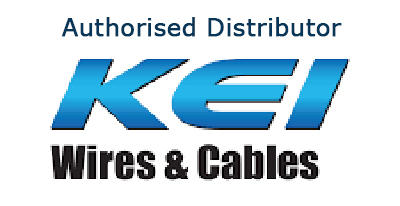Faq
- Q. What is a Solar Rooftop System?
-
In a solar rooftop system, the solar panels are installed in the roof of any residential, commercial, institutional and industrial buildings. This can be of two types
 Solar Rooftop System with
storage facility using battery
Solar Rooftop System with
storage facility using battery
 Grid Connected Solar Rooftop
System.
Grid Connected Solar Rooftop
System.
-
- Q. What is a Solar Rooftop System with Storage facility?
-
Such rooftop system has battery as storage facility. The solar electricity is stored in the battery and can be utilized during night also when the sun is not available.
-
- Q. What is a Grid Connected Solar Rooftop System?
-
In grid connected rooftop or small SPV system, the DC power generated from SPV panel is converted to AC power using power conditioning unit and is fed to the grid either of 33 kV/11 kV three phase lines or of 440/220 Volt three/single phase line depending on the capacity of the system installed at institution/commercial establishment or residential complex and the regulatory framework specified for respective States.
These systems generate power during the daytime, which is utilized fully by powering captive loads and feed excess power to the grid as long as grid is available. In case, where solar power is not sufficient due to cloud cover etc., the captive loads are served by drawing power from the grid.
-
- Q. Where such plants can be installed?
-
Such rooftop systems can be installed at the roofs of residential and commercial complex, housing societies, community centers, government organizations, private institutions etc.
-
- Q. What are the other fiscal incentives are available for Solar Rooftop
Systems?
-
There are provisions of concessional import duty/excise duty exemption, accelerated depreciation and tax holiday for setting up of grid connected rooftop power plants.
-
- Q. What efforts Government is making to providing loans for solar rooftop
systems?
-
Department of Financial services has instructed to all Public Sector Banks to encourage home loan/ home improvement loan seekers to install rooftop solar PV plants and include cost of system in their home loan proposals. So far, 9 PSB's namely Bank of India, Syndicate Bank, State Bank of India, Dena Bank , Central Bank of India, Punjab National Bank, Allahabad Bank, Indian Bank and Indian Overseas Bank have given instructions to extend loan for Grid Interactive Rooftop Solar PV Plants as home loan/ home improvement loan.
-
- Q. What is the size of grid connected rooftop solar system?
-
The rooftop solar systems from 1 KWp up to 1,000 KWp or in combination can be set up on the roofs.
-
- Q. How much roof area is required to set up the grid connected rooftop solar
system?
-
Approximately, 10 sq. mtrs. or 100 sq. feet area is required to set up 1 KWp grid connected rooftop solar system.
-
- Q. What are the advantages of Grid-Connected Rooftop Solar System?
-
Advantages as follows:
 Easy Integration to your
existing utilities.
Easy Integration to your
existing utilities.
 Convert unused roof space
into a valuable energy resource.
Convert unused roof space
into a valuable energy resource.
 Rooftop Solar Investment is
returned in less than 5 years.
Rooftop Solar Investment is
returned in less than 5 years.
 No interconnection problems,
No wheeling charges and transmission losses.
No interconnection problems,
No wheeling charges and transmission losses.
 Insulation from likely
increase in energy cost.
Insulation from likely
increase in energy cost.
 Savings in diesel as well as
replacing the polluting, expensive and noisy diesel generator.
Savings in diesel as well as
replacing the polluting, expensive and noisy diesel generator.
 Long Life (25 years).
Long Life (25 years).
 Low operation &
Maintenance.
Low operation &
Maintenance.
 Clean, Quiet and Visually
Unobtrusive.
Clean, Quiet and Visually
Unobtrusive.
 Long term energy security.
Long term energy security.
-
- Q. What is the potential available in India?
-
According to a study conducted by TERI, a potential of 124 GWp SPV Rooftop plants has been estimated in the country. This can be achieved through active supports from the States.
-
- Q. What is Net metering?
-
The grid connected rooftop system can work on net metering basis wherein the beneficiary pays to the utility on net meter reading basis only. Alternatively two meters can also be installed to major the export and import of power separately. The mechanism based on gross metering at mutually agreed tariff could also be adopted.
-
- Q. What is Feed-in-Tariff?
-
In feed-in-tariff, the Government offers a tariff for purchase of the solar power generated from such plants, specially in case of the utility solar plants.
-
- Q. Among net metering and feed-in-tariff what is preferred?
-
Net metering mechanism is more popular among States.
-
- Q. In case of grid failure, is there any chance for shocks to the person who is
repairing?
-
In case the grid fails, the solar power has to be fully utilized or stopped immediately feeding to the grid so as to safe-guard any grid person/technician from getting shock (electrocuted) while working on the grid for maintenance etc. This feature is termed as 'Islanding Protection'.
-
- Q. What are requirements from State to promote grid-connected rooftop solar
systems?
-
States should have conducive solar policy to allow the grid connectivity. State Regulators have issued tariff order for appropriate tariff, net-metering/feed-in tariff and the grid connectivity, and The Distribution Companies agree to allow grid connectivity and purchase the electricity on feed-in-tariff or through net metering arrangement.
-
- Q. How many States have policies to promote grid-connected rooftop solar
systems?
-
So far, 13 States namely Andhra Pradesh, Chhattisgarh, Delhi, Gujarat, Haryana, Karnataka, Kerala, Punjab, Rajasthan, Tamil Nadu, Uttarakhand, Uttar Pradesh and West Bengal have notified policies that include promotion of grid connected rooftop solar systems with net metering. Regulation from the State Electricity Regulatory Commission is also required to allow net metering/ feed-in-tariff. More states are adopting this policy.
-
- Q. How many States Regulators have notified orders to promote grid-connected rooftop solar
systems?
-
20 State/UT Regulators from Andhra Pradesh, Chhattisgarh, Delhi, Gujarat, Haryana, Karnataka, Kerala, Odisha, Punjab, Rajasthan, Tamil Nadu, Uttar Pradesh, Uttarakhand and West Bengal, Andaman & Nicobar, Chandigarh, Dadra & Nagar Haveli, Daman & Diu, Lakshadweep, Pondicherry and Goa have so far issued these regulations for net- metering/gross metering. More states will be getting notified orders soon.
-
- Q. What is the gross potential of solar power in the country?
-
India is endowed with vast solar energy potential. About 5,000 trillion kWh per year energy is incident over India's land area with most parts receiving 3-5 kWh per sq. m per day. Based upon the availability of land and solar radiation, the potential of solar power in the country has been assessed to be 750 GWp.
-


